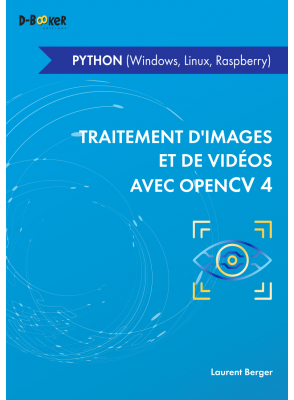Almighty XML

Les Éditions D-BookeR, an independent publishing house, have imagined a book production system in line with our times, with the aim of better meeting the expectations of readers but also of authors, and thus making the book a medium of knowledge. flexible, enriched and easy to update. A change that was based on the choice of SaaS Calenco software, a structured writing solution developed by the French publisher NeoDoc. Why did D-BookeR approach Calenco? How has this collaboration offered innovative solutions to rethink the very conception of the book? How has the Calenco solution made it possible to gain in efficiency and agility?
D-BookeR, an atypical publishing house
Former editor of computer books at Pearson Education France, Patricia Moncorgé was confronted with the limits of traditional publishing based on the publication of printed books. A need all the more necessary in the technical and IT field, where the book must be a flexible knowledge support, easy to update. This is how the company D-BookeR was born in 2011, from the desire to implement a new way of thinking and considering books.
At D-Booker, books are first designed for digital, before being adapted for print. A totally different approach, which makes it possible to be more daring in the choice of the topics treated and to stand out with a more specific offer: à la carte purchases of books, very regular updates of certain titles, integration of multimedia elements, etc. Today, D-BookeR offers more than 500 references, in all formats and variants!
How to gain flexibility and edit in multiple formats?
To gain flexibility and meet the new requirements of the publishing business, D-BookeR had to meet four ambitious objectives: to be responsive in updating certain books, to be able to integrate multimedia content, to simply produce four book formats: web PDF, EPUB, HTML5 and PDF/X for printing, and to be able to offer titles targeted to an audience or à la carte (chapters or modules individually).
Having clarified her needs, Patricia Moncorgé, founder of D-BookeR, set out in search of a suitable solution. The idea: to automate the production chain as much as possible by designing the manuscripts directly in DocBook XML and then transforming them using XSLT. Developers who have mastered the art of XSLT and the Docbook are rare and not very affordable. After studying various options, including the OxygenXML software, D-BookeR continued its investigation and identified Calenco.
The Calenco solution did not come as a replacement but as a complement to the tools used elsewhere. The Calenco teams based their work on a constructive exchange with D-BookeR, rather than specifications, in order to analyze and fully understand the customer's needs.
Leveraging the power of XML
The Calenco team was able to take into account the specificities of the publisher's activity, providing a personalized response, which in every way meets the needs expressed by D-BookeR. A work methodology that is sometimes akin to co-development, the client being directly involved in defining the solution to be provided. “Everything had to be modeled upstream,” says Patricia Moncorgé. “But once this step is over, the solution is robust and efficient.”
Among the elements on which the Calenco teams worked, one priority: the personalization of style sheets. It was essential to obtain a book model, in the rules of the art, conforming to the standards of the trade. D-BookeR now has 5 style sheets corresponding to the 5 output formats: EPUB, HTML5, web PDF, PDF/X B&B and color PDF/X. They have been enriched and refined as needed and can be modified regularly with output parameters. Otherwise everything is managed within XML files, using tags and attributes.
Another valuable feature, the filters. Their use allows only certain elements or fragments to appear, depending on the target or the publication format of the book.
Beyond formatting, Calenco automates many things, such as inserting URLs pointing to external multimedia documents. This simplifies the inclusion of different objects, such as GIF images, 3D assets or videos, to provide rich content in digital works. Complements that can be found in other forms, such as QR codes, in the paper version.
Last point, security. The versioning system offers the possibility of browsing the history of a file and easily recovering a previous version. A reassuring feature that protects against any loss of information and content.
A fruitful and lasting collaboration
After ten years of collaboration with Calenco, D-BookeR today makes an unequivocal observation. The objectives set when the solution was implemented have been reached. Thanks to the work of the teams of developers and the listening skills of the project managers, Calenco has perfectly adapted to the specificities of the publishing industry, offering flexibility and modularity. The leader of D-BookeR summarizes very simply the changes induced by the choice of Calenco. “Calenco is a very handy tool for generating all kinds of variations of the same post and updating them as often as needed. It allows you to take full advantage of all the power of XML and optimize its use.” Patricia Moncorgé also underlined the benefits provided by the Calenco solution in the long term, in terms of organization, automation, time saving and in turn, financial gain.
“Working on the issues faced by this young publishing house has led us to develop our solution, to push Calenco's functionalities even further, particularly in terms of the inclusion of complex content such as 3D animations or videos. So much so that D-BookeR has become a perfect illustration of the possibilities offered by our tool, and Patricia Montcorgé one of our most convincing ambassadors.” concludes Camille Bégnis, founder of NeoDoc.




